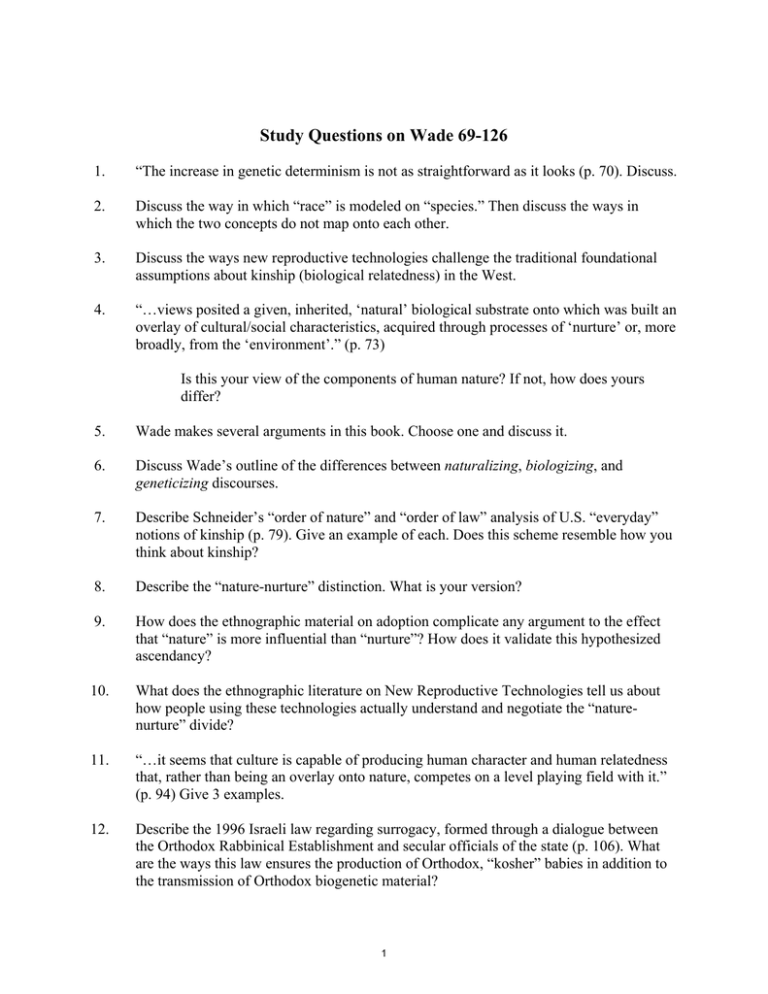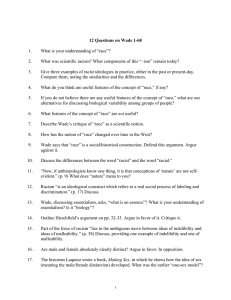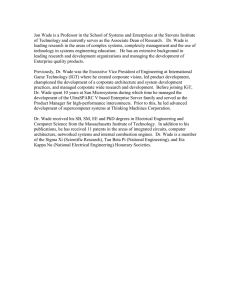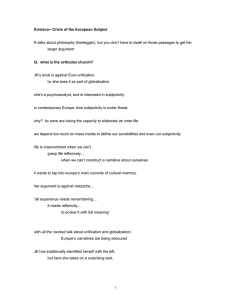Study Questions on Wade 69-126
advertisement

Study Questions on Wade 69-126 1. “The increase in genetic determinism is not as straightforward as it looks (p. 70). Discuss. 2. Discuss the way in which “race” is modeled on “species.” Then discuss the ways in which the two concepts do not map onto each other. 3. Discuss the ways new reproductive technologies challenge the traditional foundational assumptions about kinship (biological relatedness) in the West. 4. “…views posited a given, inherited, ‘natural’ biological substrate onto which was built an overlay of cultural/social characteristics, acquired through processes of ‘nurture’ or, more broadly, from the ‘environment’.” (p. 73) Is this your view of the components of human nature? If not, how does yours differ? 5. Wade makes several arguments in this book. Choose one and discuss it. 6. Discuss Wade’s outline of the differences between naturalizing, biologizing, and geneticizing discourses. 7. Describe Schneider’s “order of nature” and “order of law” analysis of U.S. “everyday” notions of kinship (p. 79). Give an example of each. Does this scheme resemble how you think about kinship? 8. Describe the “nature-nurture” distinction. What is your version? 9. How does the ethnographic material on adoption complicate any argument to the effect that “nature” is more influential than “nurture”? How does it validate this hypothesized ascendancy? 10. What does the ethnographic literature on New Reproductive Technologies tell us about how people using these technologies actually understand and negotiate the “naturenurture” divide? 11. “…it seems that culture is capable of producing human character and human relatedness that, rather than being an overlay onto nature, competes on a level playing field with it.” (p. 94) Give 3 examples. 12. Describe the 1996 Israeli law regarding surrogacy, formed through a dialogue between the Orthodox Rabbinical Establishment and secular officials of the state (p. 106). What are the ways this law ensures the production of Orthodox, “kosher” babies in addition to the transmission of Orthodox biogenetic material? 1 2 13. List three possible ways race may become embodied, according to Wade. Include both cultural and biological components. 2 MIT OpenCourseWare http://ocw.mit.edu 21A.226 Ethnic and National Identity Fall 2011 For information about citing these materials or our Terms of Use, visit: http://ocw.mit.edu/terms.



